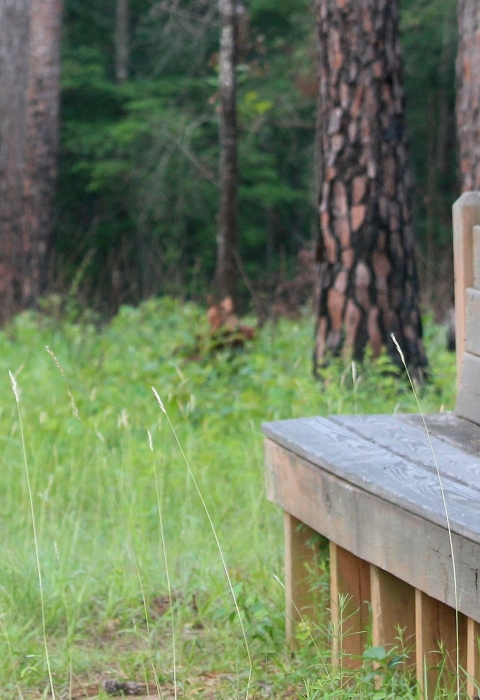What We Do
Piedmont NWR has a very active forest management program that includes prescribed burning, invasive species invasive species
An invasive species is any plant or animal that has spread or been introduced into a new area where they are, or could, cause harm to the environment, economy, or human, animal, or plant health. Their unwelcome presence can destroy ecosystems and cost millions of dollars.
Learn more about invasive species control, thinning, regeneration, and forest stand improvement as some of the techniques used to enhance and maintain wildlife habitat conditions. Current management provides optimal habitat for RCWs through time.
Timber Harvesting
The refuge uses a forest management method called modified even-aged management. Industrial forestry bases the rotation (the time between planting and harvesting of a forest stand) on financial considerations. The refuge uses extended rotations; 100 years due to the red-cockaded woodpecker’s need for large old pines. Also, while in industrial forestry an even-aged stand has a single age class, the refuge uses retention harvesting. In this approach seed trees used for regenerating a new stand are kept for goals other than regeneration. These retained trees are legacies from the prior stand that persist in the new stand, increasing age class diversity.
Fire Management
Fire management within the refuge consists of both wildfire suppression and prescribed burning. Prescribed fire is the major tool used to manage vegetation (fuels) buildup for the Refuge. Due to the ample vegetation combined with the long growing season and high rainfall amounts found in Georgia, fuels management is an ongoing fire program concern. Fire intervals of as little as three years, combined with only moderate drought conditions, can result in wildfire ignitions. Therefore the goal of reducing fuels with prescribed fire cannot be accomplished with a single prescribed fire event or even a short series of events but with the recurring use of fire every 2 or 3 years continuously through time. Prescribed fire not only helps to reduce the risks of wildfires but is an important tool in restoring and maintaining habitat for the native wildlife on the refuge. By burning the undergrowth of the pine dominated forests frequently the young trees and shrubs are replaced with a grass and herbaceous groundcover. This open park like pine forest is desired by the endangered red-cockaded woodpecker and many other native, early successional species such as the Bachman’s sparrow and bobwhite quail.
Law Enforcement
Questions regarding law enforcement or violations on the refuge should be directed to the refuge office at (478) 986-5441 or:
Federal Wildlife Officer Thomas Payne
(478) 447-0757 or Thomas_Payne@fws.gov
For injured or nuisance wildlife issues, please contact the Georgia Department of Natural Resources
Georgia Wildlife Injured Orphaned Wildlife
GEORGIA DNR TURN IN POACHERS (T.I.P.) STATEWIDE: 1-800-241-4113
If you have an emergency, please call 911.
Laws and Regulations
Please see the Piedmont NWR Hunting and Fishing Regulations for more information on hunting and fishing on the Refuge.
